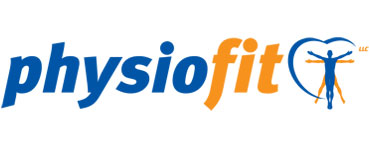What is Physical Therapy?
Physical Therapy (PT), also known as Physiotherapy, is one of the allied health professions that, by using evidence-based assessment, exercise, joint mobilization and health education, treats conditions such as chronic or acute pain, soft tissue injuries, arthritis, physical impairments and gait disorders typically of musculoskeletal, and neurological origins. Physical therapy is used to improve a patient’s physical functions through physical examination, diagnosis, prognosis, physical intervention, rehabilitation and patient education.
Benefits
While there are many benefits of physical therapy, ten common ones are:
- Improved Muscle Function — Physical therapy improves and maintains muscle integrity and strength by engaging soft tissues in a series of predetermined movements.
- Greater Flexibility — You can enjoy increased joint flexibility and range of motion that improves quality of life.
- Pain Relief — With physical therapy, you can significantly reduce pain caused by inflammation and swelling.
- Stress Relief — When you remove the stress of being unhealthy from your mind and body, you lower your cortisol levels. High cortisol levels have been linked to atherosclerosis, reduced cognitive functioning, hypertension and cardiovascular disease.
- A Better Understanding of Your Condition — Through physical therapy, you can learn more about your condition.
- A Stronger Core — Physical therapy focuses on core stability and strengthening to restore pelvis and back muscle health (whole body support).
- Less Stress on Joints — During physical therapy, you can learn how to evenly distribute pressure on ankle, knee and hip joints.
- Relief Without Medication/Surgery — Physical therapy can help you avoid using prescription pain or anti-inflammatory medications or surgery to manage recovery from injury or post-operative complications. A conservative treatment such as physical therapy is not only healthier and more effective, but it is also more cost-effective.
- An Active Role in Your Recovery — You can take an active role in your recovery.
- Reduced Risk of Re-injury — Physical therapy reduces the risk of re-injury by strengthening and toning muscles, as well as coordination-enhancing activities.
Our experienced physical therapists can manage and control painful conditions while promoting musculoskeletal, cardiovascular and cognitive health.
Common Diagnoses
- Achilles Tendinitis
- ACL Injury Prevention
- Adhesive Capsulitis (Frozen Shoulder)
- Ankle Sprains
- Carpal Tunnel
- Degenerative Disc Disease
- Headaches
- Iliotibial Band Syndrome
- Lymphedema Management
- Osteoporosis
- Patellofemoral Pain Syndrome
- Plantar Fascitis
- Post-Cancer Rehabilitation
- Posterior Tibialis Tendinitis
- Pregnancy-Related Low Back Pain
- Spinal Stenosis
- Tarsal Tunnel Syndrome
- Muscular Torticollis
*Services are not available at all locations. Call or click the location page near you for that center’s services.
Ankle Pain
Learn MoreBack Pain
Learn MoreElbow Pain
Learn MoreKnee Pain
Learn MoreNeck Pain
Learn MoreShoulder Pain
Learn MoreWhat to Expect
Every patient has a unique health history, diagnosis and personal goals. When you come for your first appointment, we will create a personalized treatment plan for you.
We work with most major insurance providers and do our best to help keep the paperwork pain-free. If you’d like to confirm your insurance coverage, please let us know and we can verify when you schedule. If your insurance provider requires a co-pay, we will ask for this payment at each visit. We accept payments by cash, check or credit card.
When to Arrive
On average, a patient’s first visit lasts about an hour. We typically ask patients to arrive 15 minutes early to sign-in, complete paperwork and/or change clothes.
What to Bring
On your first visit, you’ll need to bring your physician referral or prescription (if needed), your insurance card, your primary registration forms, your ID or driver’s license and your co-payment (as applicable). If desired, you may bring a change of clothing.
How it Works
During your first visit, your physical therapist will do an initial evaluation and discuss your plan of care. The therapist uses this information to set goals for your continued treatment. Physical therapy goals may include improved movement, strength, endurance and flexibility, as well as decreased pain. Your subsequent visits will focus on treatment that is based on your diagnosis and individualized goals.

